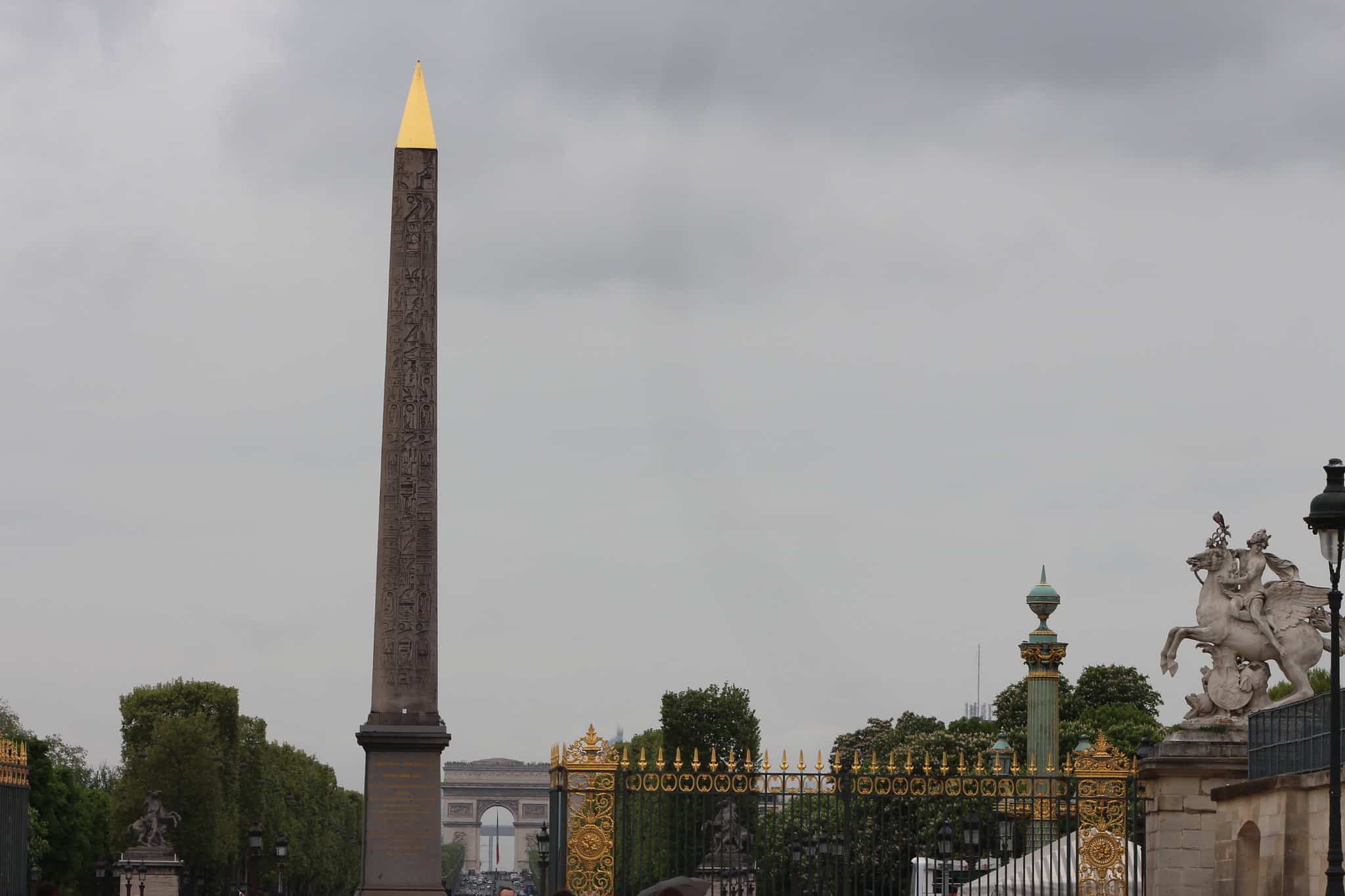

A French Egyptologist has uncovered secret hieroglyphs hidden for more than 3,000 years on the Luxor Obelisk at Place de la Concorde in Paris. The discovery sheds new light on the political and religious messaging of Pharaoh Ramses II.
Jean-Guillaume Olette-Pelletier, a lecturer at the Catholic Institute of Paris who studied at the Sorbonne, made the discovery in December 2021, after renovation scaffolding gave him rare access to the top of the monument—something no expert had managed since its arrival in France in 1836.
Just beneath the gilded tip, he identified seven cryptic formulas, some of which were shaped like rebuses, while others contained sophisticated symbolic structures.
The find builds on work once examined by Jacques-Joseph Champollion, brother of the famed decipherer of hieroglyphs, who had studied the obelisk in the 1830s but missed these hidden elements.
These messages were carved on all four faces of the monument, originally from the Temple of Amun in Luxor. According to Olette-Pelletier, they could only be understood when viewed from specific angles, particularly from boats once traveling on the Nile.
He explained that the full meaning was reserved for a highly educated elite capable of reading cryptographic hieroglyphs. “The king confirms himself as the incarnate god, who cannot be dethroned,” Olette-Pelletier told France Info. “It was propaganda aimed at the very high intellectual elite.”
The hidden messages praised Ramses II, confirming his divine right to rule. Olette-Pelletier believes the engravings were made in two phases – first on the central lines, then later on the side columns – to reinforce the king’s authority at different levels of visibility.
Olette-Pelletier first noticed the code while examining the crowns worn by figures in the carvings. On the side that once faced the Nile, a symbol hidden in Ramses’ crown caught his eye. The hieroglyph showed the “horns of a bull” — a powerful symbol of strength and kingship in ancient Egypt.
This led him to uncover additional signs that, when pieced together, revealed the message: “Appease the life force of the god Amun.”
The accompanying text was addressed to temple visitors, particularly the nobility who would have approached by boat during the Opet Festival, an annual religious celebration.
“These messages are a form of propaganda in favor of the builder of the site: Pharaoh Ramses II,” Olette-Pelletier said in an interview.
A detail overlooked for centuries was also found beneath one of the figures of the god Amon — an offering table. “This allows us to discover a phrase where no element is missing: an offering that the king gives to the god Amon,” he told BFMTV.
This form of visual communication, sometimes referred to as “three-dimensional cryptography,” required viewers to walk around the obelisk and mentally piece together separate fragments to unlock the message.
One part alone made little sense – but together, they named Ramses II and emphasized his divine status. Olette-Pelletier previously applied similar techniques to a child’s chair from the tomb of Tutankhamun, where he deciphered a maxim crafted through hidden symbols.
More recently, he has studied 284 funerary steles dating to around 2100 BCE, of which 63 show cryptographic markings. “Most of the hieroglyphs on artifacts don’t just carry one, but several levels of meaning,” he said. “They can be understood both through their function and their decoration.”
Olette-Pelletier’s work, now under review for publication, expands the field of cryptographic Egyptology. His findings about secret hieroglyphs on the Paris Obelisk have drawn attention from leading scholars, including John Darnell at Yale University and Andreas Stauder at the École Pratique des Hautes Études in France.
The research offers new insight into how Egypt’s ancient rulers used art, text, and design to protect their power — and their secrets.
